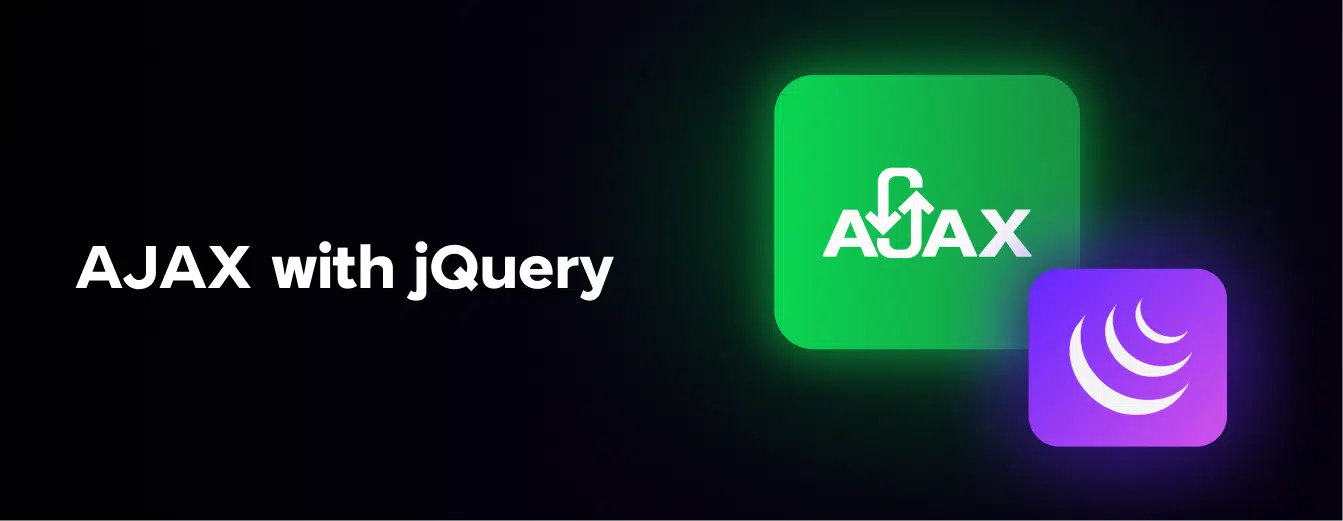
Ruby on Rails vs JavaScript: A Comprehensive Analysis for Backend Development [2024]
Apr 30, 2024 7 Min Read 1152 Views
(Last Updated)
Choosing between Ruby on Rails and JavaScript for backend development is a crucial decision that can significantly impact the success and scalability of web applications. Ruby on Rails, a server-side web application framework written in Ruby, was initially released in 2004, setting a foundation for efficient web development practices.
On the other side, JavaScript, created by Brendan Eich in 1995, has evolved beyond a high-level language that runs directly in web browsers to play a significant role in backend development.
With the technological landscape continuously evolving, the debate of Ruby on Rails vs. JavaScript in the backend sphere hones in on coding speed, performance, and scalability. Both of these technologies bring their strengths to the table.
This article embarks on a detailed examination, juxtaposing these two titans of backend development to guide your decision-making process.
Table of contents
- Understanding Ruby on Rails for Backend
- Pros and Cons of Ruby on Rails for Backend
- Understanding JavaScript for Backend
- Pros and Cons of JavaScript for Backend
- Ruby on Rails vs JavaScript
- 1) Coding Speed and Development Efficiency
- 2) Performance and Scalability
- 3) Community Support and Resources
- 4) Making the Choice for Backend Development
- Takeaways...
- FAQs
- Can Ruby on Rails Be Considered Superior to JavaScript for Web Development?
- How Suitable Is Ruby on Rails for Backend Development?
- Is It Possible for Ruby on Rails to Take Over JavaScript's Role in Web Development?
Understanding Ruby on Rails for Backend
Understanding Ruby on Rails requires diving into its core characteristics and how it stands out as a framework for backend development:

- Object-Oriented and Dynamic Nature: Both Ruby on Rails and JavaScript share a foundation in object-oriented programming (OOP), scripting, and dynamic capabilities. This makes them versatile for various programming tasks. However, Ruby on Rails, being a framework, offers a structured approach to web development, leveraging Ruby’s clean syntax for more readable and maintainable code.
- Convention over Configuration: Ruby on Rails’ philosophy significantly speeds up development time by assuming what the developer wants to do and how they want to do it. This reduces the amount of code needed to create applications and minimizes decision fatigue, allowing developers to focus on unique application logic rather than boilerplate code.
- Built-in Security and Scalability:
- Security: Ruby on Rails includes several built-in features to protect against common threats like XSS, CSRF, and SQL injections, making it a secure choice for developing web applications.
- Scalability: While Ruby on Rails scales well for various applications, it may require optimization as applications grow. Its ecosystem supports this through a vast library of gems (open-source libraries), enhancing functionality and performance.
Ruby on Rails is particularly favored for its rapid development capabilities, extensive open-source libraries, and strong emphasis on security and scalability. Its ease of learning and writing, combined with a supportive community, makes it an attractive option for both beginners and experienced developers focusing on backend development.
Find Out Top 6 Backend Frameworks That You Should Know in 2024
Pros and Cons of Ruby on Rails for Backend

Pros of Ruby on Rails:
- Simplicity and Readability: Ruby’s syntax is concise, making it easier for developers to read and write code. This simplicity accelerates the learning process for new developers and enhances productivity.
- Convention over Configuration: RoR’s philosophy minimizes decision-making, speeding up development.
- Extensive Libraries: The availability of numerous gems facilitates rapid application development.
- Community Support: A vibrant and active community on platforms like GitHub offers extensive resources, including code snippets and troubleshooting support.
- Active Community: Access to a wealth of knowledge and shared experiences.
- Continuous Updates: Regular updates to libraries and tools keep the framework modern and secure.
Cons of Ruby on Rails:
- Performance Constraints: RoR can face challenges in scaling, particularly in high concurrency scenarios, leading to slower runtime speeds.
- Scalability: Requires optimization for large-scale applications.
- High Concurrency: Struggles with handling multiple requests simultaneously.
- Flexibility and Speed Issues: Compared to JavaScript, RoR has less flexibility and slower boot times, which can be critical in large projects.
- Boot Speed: Longer load times for massive projects.
- Flexibility: The opinionated nature of RoR might limit creative solutions.
- Cost of Errors: Mistakes in development can significantly impact performance and lead to structural issues, making it crucial to have an experienced team.
- Structural Deficiencies: Hard to fix errors due to initial mistakes.
- Documentation Challenges: Finding reliable documentation for less popular gems can be difficult.
Know More: Backend Development: Roles, Responsibilities, Skills, and Salary – A Complete Guide[2024]
Understanding JavaScript for Backend
JavaScript’s ascent in backend development is underscored by its performance and scalability, particularly with the advent of Node.js.

This runtime environment, based on Google’s V8 engine, has revolutionized how developers approach backend tasks, enabling JavaScript to execute outside the web browser.
According to the GitHub Oververse 2021 Report, JavaScript’s versatility has made it the most used language worldwide, highlighting its importance in the current web development landscape.
Here are some critical aspects to consider:
- Performance and Scalability:
- JavaScript, especially through Node.js, excels in handling high-traffic and memory-intensive applications thanks to its non-blocking I/O operations. This allows for processing multiple requests simultaneously, enhancing application speed and performance.
- Node.js’s scalability is a standout, with its modular architecture making it easier to scale applications as user requirements grow.
- Versatility and Ecosystem:
- The ‘JavaScript everywhere’ approach, facilitated by Node.js, blurs the lines between front-end and back-end development. This unified language model promotes code reusability and smoother transitions between tasks.
- JavaScript’s ecosystem is rich with frameworks such as Express.js, Koa.js, and NestJS, offering developers a plethora of tools for creating efficient backend systems.
- Security and Learning Curve:
- While JavaScript’s flexibility and functionality are significant advantages, its security posture can be a concern, with vulnerabilities to attacks like XSS and CSRF. Choosing the right framework and implementing best practices are essential for mitigating these risks.
- Despite a steeper learning curve due to the intricacies of JavaScript frameworks and database queries, the extensive documentation, large community, and abundance of learning resources make mastering JavaScript for backend development achievable.
Also Explore: Top 7 Back-End Developer Skills You Should Know
Pros and Cons of JavaScript for Backend
JavaScript, a cornerstone of modern web development, presents a mixed bag of advantages and challenges when applied to backend development. Here’s a closer look at its pros and cons:

Pros of JavaScript:
- Community and Resources: JavaScript’s vast community, better documentation, and extensive resources empower developers with tools and knowledge for effective problem-solving.
- Large and Engaged Developer Community: With 47.12% of developers utilizing it for web development, the support network is robust.
- Rich Ecosystem: A plethora of libraries, frameworks, and tools streamline backend development tasks.
- Performance and Scalability: Known for its high application speed, JavaScript excels in environments demanding rapid data processing and high traffic handling.
- Node.js’s non-blocking I/O model and event-driven architecture facilitate efficient concurrent request processing.
- Versatility and Full-Stack Development: JavaScript’s adaptability across various programming paradigms and its utility in both frontend and backend development enhance developer productivity and application consistency.
Cons of JavaScript:
- Security Concerns: The dynamic nature of JavaScript can introduce vulnerabilities, necessitating vigilant security practices.
- Framework-Dependent Security: The security robustness largely depends on the chosen framework.
- Performance Bottlenecks: Despite its overall speed, JavaScript’s single-threaded nature might hinder performance in CPU-intensive tasks.
- Limited Multi-Threading: This can be a drawback in applications requiring extensive parallel processing.
- Learning Curve and Debugging: While JavaScript offers a wealth of resources, beginners may find the language’s intricacies challenging.
- Debugging Tools: The available tools may not offer the same level of sophistication as those for other languages, complicating bug identification and resolution.
In summary, JavaScript for backend development is a powerful yet nuanced choice, where its broad community support and performance capabilities must be balanced against security considerations and potential performance bottlenecks.
Also Read: Backend Development Roadmap: A Complete Guide 2024
Ruby on Rails vs JavaScript
When picking Ruby on Rails vs JavaScript for backend development, several key points emerge from their shared and distinct characteristics:
- Object-Oriented Programming (OOP) and Scripting:
- Both Ruby on Rails and JavaScript are Object-Oriented Programming languages, dynamic, and general-purpose, providing flexibility in various development scenarios.
- JavaScript’s event-driven, non-blocking I/O nature makes it more scalable, and particularly suitable for applications requiring high concurrency.
- Performance and Scalability:
- JavaScript, especially when using Node.js, showcases superior performance in handling high-traffic and memory-intensive applications due to its non-blocking I/O operations.
- Ruby on Rails, while offering rapid development and simplicity in syntax, may face challenges in scaling and performance in computationally intensive tasks compared to JavaScript.
- Community Trends and Real-world Applications:
- High-profile migrations, such as LinkedIn, Hapi, and PayPal, from Ruby on Rails to Node.js, signal a trend towards JavaScript for its scalability and performance advantages.
- Ruby’s straightforward syntax and the convention over configuration principle make it an excellent choice for projects prioritizing rapid development and ease of learning.
This was just an overall gist of what the ruby on rails vs javascript battle looks like, now let us discuss some very important points in detail and understand which one could be the best option for backend development.
Must Explore About Top 15 Technologies to Learn for a Java Backend Developer
1) Coding Speed and Development Efficiency
When it comes to coding speed and development efficiency in the realm of backend development, the choice between Node.js and Ruby on Rails is pivotal. Here’s a breakdown to guide your decision:

- Node.js:
- Architecture: Leveraging its non-blocking, event-driven architecture, Node.js excels in applications requiring real-time data processing and high concurrency. This architecture, built on Google’s V8 engine, is designed for speed, making Node.js one of the fastest platforms available.
- Use Cases: Ideal for projects that demand rapid data processing, such as chat applications or live updates in web applications. Its performance is unmatched for specific application types that benefit from its architecture.
- Ruby on Rails:
- Development Speed: Known for its ‘convention over configuration’ philosophy, Ruby on Rails significantly reduces development time by making assumptions about what you’re trying to do. This allows for quicker setup and fewer decisions to be made during the initial stages of development.
- Use Cases: Best suited for applications where development speed and readability of code are prioritized over raw performance. It’s particularly advantageous for startups looking to quickly launch their product.
- Factors Influencing the Choice:
- The familiarity of the development team with either platform can greatly influence the choice. A team experienced in JavaScript might lean towards Node.js for backend development, while a team proficient in Ruby will find Ruby on Rails more intuitive.
- The specific needs of the project and available resources also play a crucial role. While Node.js might be the go-to for high-performance applications, Ruby on Rails could be the better choice for rapid development and ease of maintenance.
Understanding these nuances will help you make an informed decision tailored to your project’s requirements, ensuring both coding speed and development efficiency are optimized.
Must Read: 5 Tips For Secure Coding Practices in Full Stack Development
2) Performance and Scalability
In the realm of backend development, the performance and scalability of Ruby on Rails and JavaScript (specifically Node.js) are critical factors that influence their applicability in various projects. Here’s a technical breakdown to guide your understanding:

- Performance:
- Ruby on Rails: Utilizes a multi-threaded approach, which can be less efficient in handling concurrent requests compared to the event-driven model. It shines in CRUD (Create, Read, Update, Delete) operations and traditional server-rendered web applications but may lag in real-time, high-concurrency scenarios.
- JavaScript (Node.js): Boasts an event-driven, non-blocking I/O model that excels in handling concurrent connections efficiently. This makes it highly suitable for real-time applications, APIs, and microservices that require handling numerous simultaneous processes or requests.
- Scalability:
- Ruby on Rails: Can scale vertically (adding more powerful hardware) with ease but might encounter challenges in horizontal scaling (adding more machines) due to its architecture. Optimizations and architectural considerations are necessary for large-scale deployments.
- JavaScript (Node.js): Designed with scalability in mind, Node.js applications can easily scale both horizontally and vertically. Its lightweight nature and asynchronous processing model allow for efficient distribution of processes across multiple cores and servers.
Must Explore: Horizontal vs Vertical Scaling for Efficient System Design
Understanding these technical aspects is crucial in selecting the right backend technology for your project. While Ruby on Rails offers rapid development for certain types of applications, JavaScript with Node.js provides superior performance and scalability, especially in modern, high-concurrency web applications.
3) Community Support and Resources
When you’re delving into backend development, the community support and resources available can significantly influence your learning curve and problem-solving efficiency. Here’s how Ruby on Rails and JavaScript stack up in this arena:

- Community Size and Support:
- Ruby on Rails: Boasts a dedicated and experienced community. While smaller than JavaScript, it is known for its high-quality contributions and a strong ethos of mutual support.
- JavaScript: Offers the largest developer community, thanks to its widespread use across both frontend and backend development. This size translates to a vast array of learning resources, libraries, and forums for troubleshooting.
- Resource Availability:
- Ruby on Rails: Features an impressive collection of gems (libraries) that extend functionality and streamline development processes. However, the sheer volume of resources in the JavaScript ecosystem surpasses it.
- JavaScript: The npm (Node Package Manager) repository is the largest software registry in the world. JavaScript’s extensive library ecosystem covers almost any functionality a developer could need.
- Platforms for Collaboration and Learning:
- The Treehouse Community stands out as a resource for developers, designers, and programmers of all skill levels. It provides a collaborative space for learning, sharing, and receiving feedback on projects. This platform is beneficial for both Ruby on Rails and JavaScript learners, although the latter may find more diverse interactions due to JavaScript’s broader usage.
In summary, while Ruby on Rails offers a strong, quality-focused community, JavaScript’s sheer size and resource availability present a more extensive support network, making it a critical factor to consider for backend development.
Find Out The Best Way To Learn Back-End Development in 2024
4) Making the Choice for Backend Development
Making the right choice for your backend development hinges on understanding the specific advantages each technology brings to different project types. Here’s a focused look at where Ruby on Rails and JavaScript (specifically Node.js) excel:
- Ruby on Rails:
- Complex Software Development: With its convention over configuration philosophy, Ruby on Rails streamlines the development process, making it ideal for building complex software solutions where business logic and data modeling are intricate.
- E-commerce Websites: The robust security features and scalable architecture of Ruby on Rails cater well to the demands of e-commerce platforms, ensuring smooth transaction processes and user data protection.
- Entertainment Platforms: For content-rich platforms requiring high levels of customization and user interaction, Ruby on Rails provides a solid foundation, facilitating rapid development and easy content management.
- JavaScript (Node.js):
- Web Applications: JavaScript’s asynchronous nature and event-driven architecture make it perfect for developing highly interactive web applications that require real-time data updates.
- Games: The ability to handle high-performance, real-time updates seamlessly across both client and server sides makes JavaScript a go-to choice for online game development.
- Mobile Applications: With frameworks like React Native, JavaScript extends its versatility to mobile app development, enabling code reuse for both web and mobile platforms and speeding up the development process.
Understanding these application-specific strengths will guide you in choosing the most suitable backend technology for your project, ensuring your development efforts align with your project’s requirements and goals.
Takeaways…
Throughout this article, we’ve understood how both Ruby on Rails and JavaScript differ. Ruby on Rails stands out for its rapid development processes, bolstered by convention over configuration, while JavaScript, with the advent of Node.js, shines in handling high-concurrency applications and real-time data processing, drawing on its non-blocking I/O operations.
Whether prioritizing rapid development and maintainability with Ruby on Rails or leveraging JavaScript’s versatility and performance for real-time applications, the choice significantly influences a project’s success trajectory.
As the digital landscape evolves, continuously reassessing these technologies in light of new advancements and project demands will remain crucial for excellent backend development.
Must Explore: Backend Developer Interview Questions and Answers: A Resourceful Guide [2024]
FAQs
Can Ruby on Rails Be Considered Superior to JavaScript for Web Development?
While JavaScript stands out for its ability to create low-latency applications without waiting for functions to complete, Ruby on Rails does not support asynchronous code and generally exhibits slower CPU processing times. Thus, each has its strengths depending on the specific needs of the project.
How Suitable Is Ruby on Rails for Backend Development?
Ruby on Rails is a robust and flexible framework well-suited for backend development, especially for web applications that benefit from rapid development cycles and adhere to the convention-over-configuration paradigm. It is highly regarded for its ability to enhance developer productivity.
Is It Possible for Ruby on Rails to Take Over JavaScript’s Role in Web Development?
Given that Ruby on Rails is primarily a backend development tool and JavaScript can be used for both frontend and backend development, Ruby on Rails cannot directly replace JavaScript. Each serves distinct roles in web development.
































Did you enjoy this article?